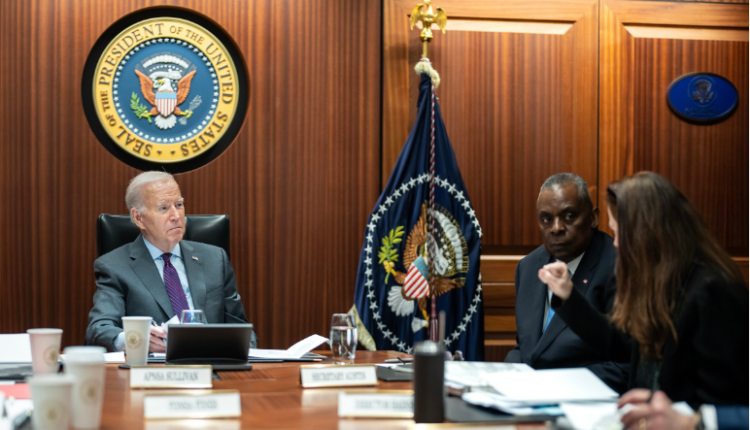In response to a recent drone strike in Jordan that claimed the lives of three U.S. troops, the United States military has initiated a significant air assault targeting over 85 sites in Iraq and Syria. The strikes specifically focus on locations associated with Iranian-backed militias and the Iranian Revolutionary Guard, aiming to deter future attacks on U.S. personnel in the region. This retaliatory action comes amid escalating tensions and concerns over the potential for further conflict in the Middle East.
The drone strike in Jordan, which resulted in the tragic loss of three Army Reserve soldiers, prompted a swift and robust response from the U.S. military. President Joe Biden emphasized that this is just the beginning, signaling a sustained approach over time to address the growing threats posed by Iranian-backed groups in the region. The decision to launch the airstrikes reflects the gravity of the situation and the need to protect American forces stationed in the Middle East.

The U.S. airstrikes strategically targeted command centers, intelligence facilities, and ammunition storage sites associated with Iranian-backed militias and the Iranian Revolutionary Guard’s Quds Force. However, the strikes carefully avoided directly targeting Iran itself or senior leaders of the Revolutionary Guard Quds Force within Iran’s borders. This calculated approach aims to prevent a further escalation of the conflict between the United States and Iran, acknowledging the delicate balance in the region.
Despite Iran denying involvement in the drone strike in Jordan, the U.S. military proceeded with its response, underscoring the importance of holding accountable those responsible for attacks on U.S. personnel. The impact of the strikes remains uncertain, with warnings potentially causing militia members to scatter and hide. The situation is fluid, and the potential for increased hostilities in the region raises concerns about the stability of ongoing conflicts.
Militia Reactions and Ongoing Conflict Dynamics
In the aftermath of the U.S. airstrikes, one Iran-backed militia, Kataib Hezbollah, announced a suspension of attacks on American troops. However, other militia groups pledged to continue the fight, positioning themselves as supporters of the Palestinian cause amid the ongoing conflict in Gaza. The varying responses highlight the complex dynamics at play, with different factions within the Iranian-backed militia network reacting differently to the U.S. military’s actions.
President Biden reiterated that the response would be ongoing and not limited to a single strike, emphasizing the United States’ commitment to defending its interests in the region. The precision and careful planning of the airstrikes aim to minimize collateral damage while sending a strong message to those responsible for the drone strike in Jordan.
Weather-Driven Precision and Vigilance
The U.S. strikes involved more than 125 precision munitions delivered by various aircraft and took about 30 minutes to execute. Weather considerations played a crucial role in planning to ensure the right targets were hit and civilian casualties were minimized. While reports indicate casualties, it remains unclear if militia members were among them. The U.S. military remains vigilant, given the intensified assaults on its bases in the region in recent times.
Defense Secretary Lloyd Austin termed the situation in the Middle East as dangerous, underscoring the complexity and volatility of the region. The ongoing conflicts, coupled with the geopolitical tensions involving Iran and its proxies, pose significant challenges for the Biden administration as it navigates a delicate balance in its approach to regional security.
Read More:
- Seize Your Educational Finances: A Comprehensive Guide to Unlocking the $2500 American Opportunity Tax Credit 2024!
- U.S. Renters Rejoice as Housing Market Cools: A Drop in Rent Prices and Enhanced Affordability in Apartments
- Discovering Texas: A Journey Through the Lone Star State’s Hidden Gems
As the aftermath of the U.S. airstrikes unfolds, the world watches closely, with concerns about potential further escalation and the broader implications for stability in the Middle East. The Biden administration’s commitment to a sustained response underscores the gravity of the situation and the need for a strategic and measured approach to address the evolving challenges in the region.

